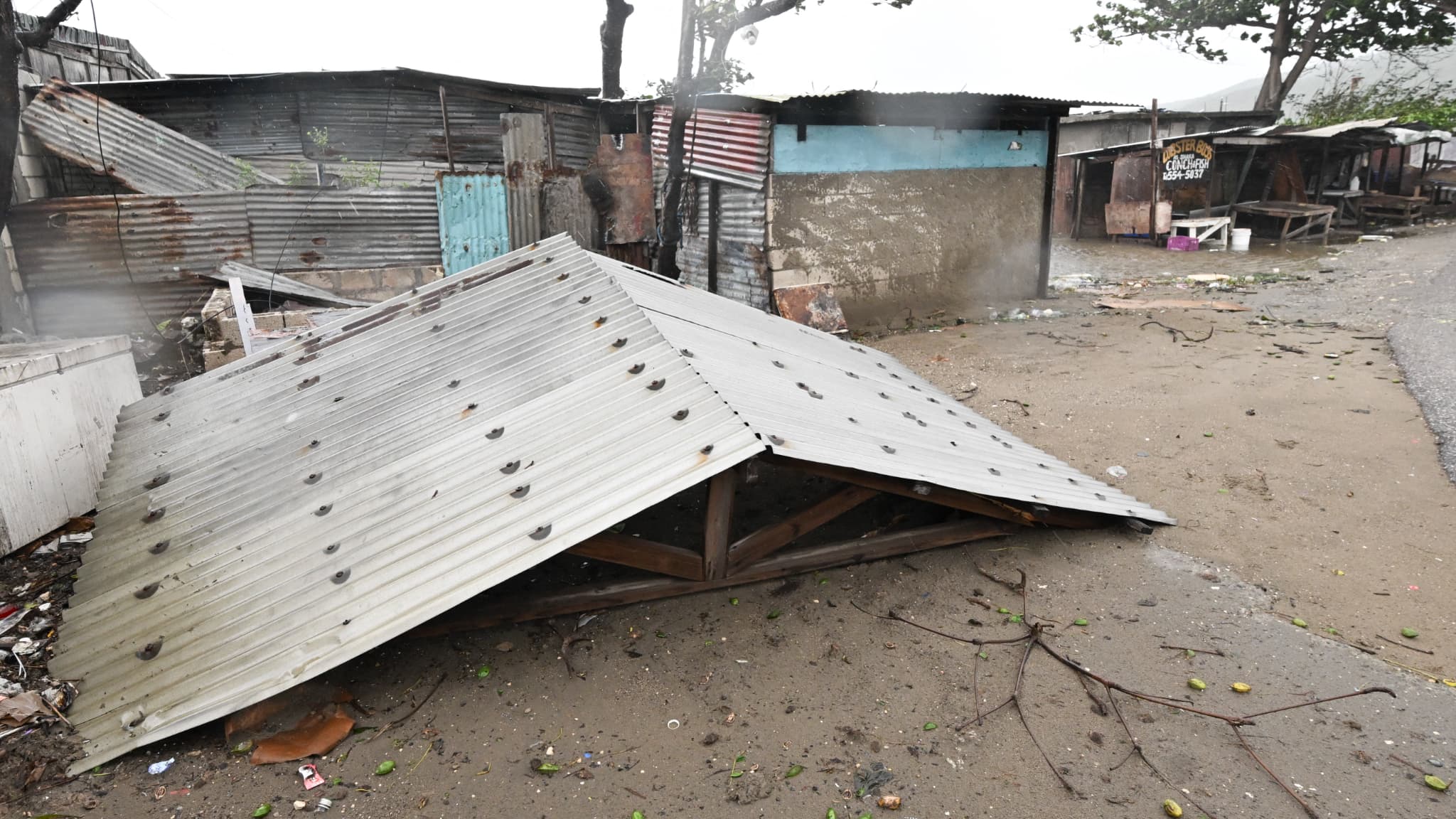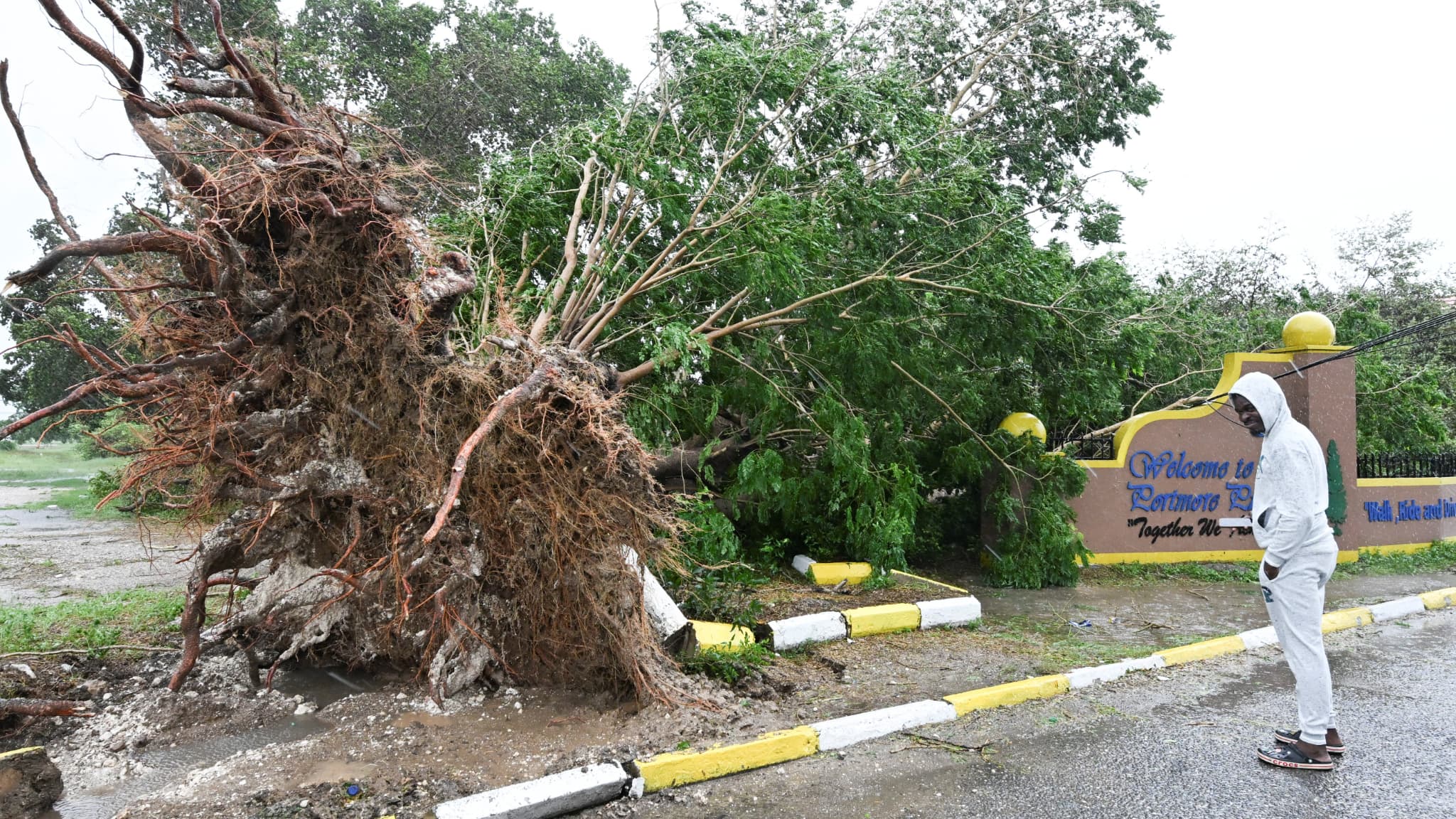Powerful Hurricane Melissa crossed Jamaica on Tuesday, October 28, knocking down roofs and trees in its path and causing torrential rains, raising fears of considerable damage, and is now heading towards Cuba.
With sustained winds close to 300 kilometers per hour, the then Category 5 hurricane, the highest on the Saffir-Simpson scale, hit western Jamaica hard at noon.
It was one of the most powerful hurricanes on record and the worst to hit Jamaica since weather records began. In order of comparison, Hurricane Katrina, which devastated New Orleans in the United States 20 years ago and caused more than 1,000 deaths, was weaker.
After losing some power and being downgraded to Category 4, Melissa began leaving Jamaica towards Cuba, the US National Hurricane Center (NHC) announced, warning that it remained “extremely dangerous.” The devastation it has caused in Jamaica is “catastrophic,” Environment Minister Matthew Samuda told CNN, reporting flooding in all regions as well as “serious damage to public infrastructure.”
“I feel like the worst is over.”
According to local media, the hurricane in particular tore off the roof of a hospital in Saint Elizabeth, in the west of the country. In Saint Catherine, central Jamaica, the Copper River overflowed its banks and strong winds tore down fences and roofs. The capital, Kingston, was relatively spared, according to Mathue Tapper, a 31-year-old resident.
“I have the impression that the worst is over,” he confided, stating, on the other hand, that he was very concerned about rural areas.
Extremely violent storms, as well as severe coastal flooding and heavy rain with the potential to cause catastrophic landslides, were expected across the country.

Prime Minister Andrew Holness warned of the risk of major damage in the west of the country and authorities called on the population to be on the lookout for crocodiles, which could become a threat due to flooding.
In these types of disasters, “water kills many more people than wind,” recalled meteorologist Kerry Emanuel, highlighting the role played by climate change. By warming the seas, it causes more storms to intensify rapidly, as was the case with Hurricane Melissa.
Refusal to evacuate
According to the Red Cross, at least 1.5 of the island’s 2.8 million inhabitants could be affected by the hurricane, which even before making landfall left three dead in the country that was preparing for its arrival, in addition to another three in Haiti and one in the Dominican Republic.
The UN announced Tuesday that it plans to airlift some 2,000 relief kits to Jamaica from Barbados as soon as possible. The last major hurricane to hit Jamaica was Gilbert, in September 1988. Less powerful than Melissa, it killed 40 people and caused enormous damage.
The country, whose economy relies heavily on tourism, had closed its international airport and upstream ports. If the tourists were able to leave the territory, another 25,000 remained there, the government detailed on Tuesday.
Like residents, they were instructed to shelter in place in hotel rooms or hurricane shelters, and wait to leave until the hurricane finished passing through the territory on Tuesday.
But many residents refused to obey these directives. “Even if it was Category 6, I wouldn’t move,” Roy Brown, a plumber and tiler who refused to evacuate, explained Monday. Hurricane Melissa is expected to reach Cuba early Wednesday, before approaching the southern Bahamas and the Turks and Caicos Islands archipelago, a British territory.
Source: BFM TV



